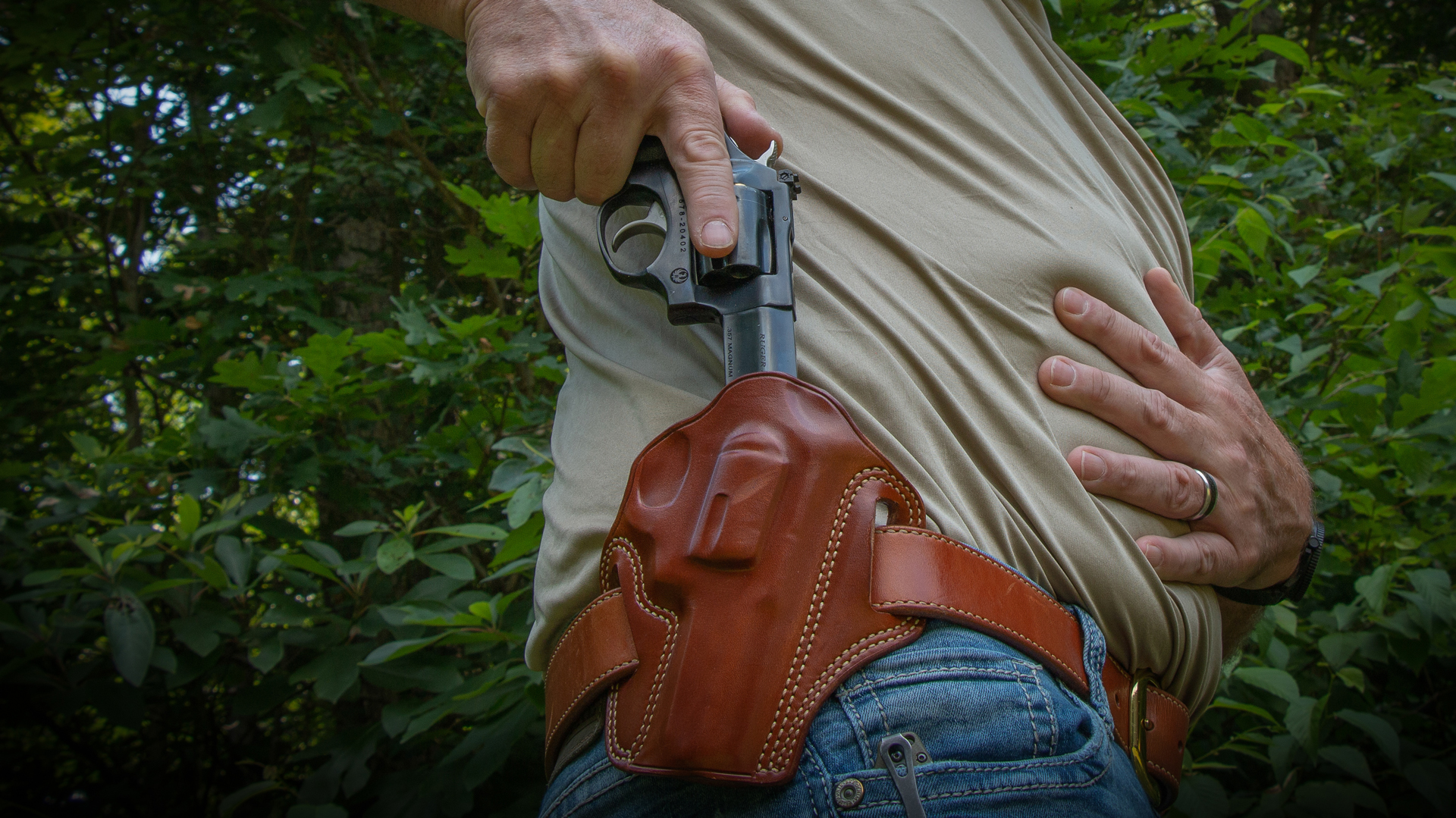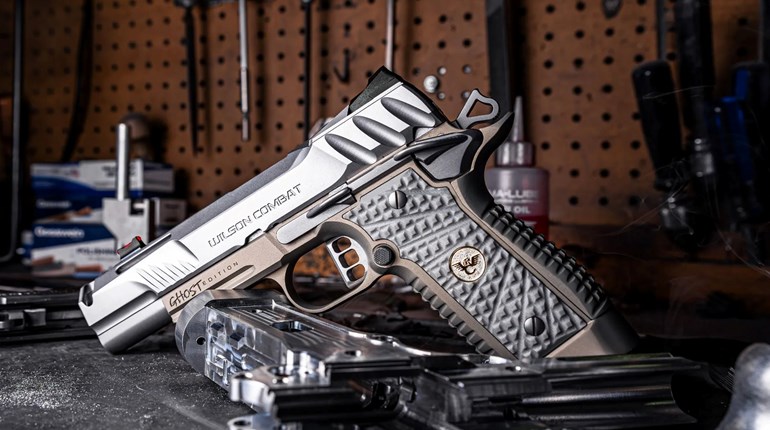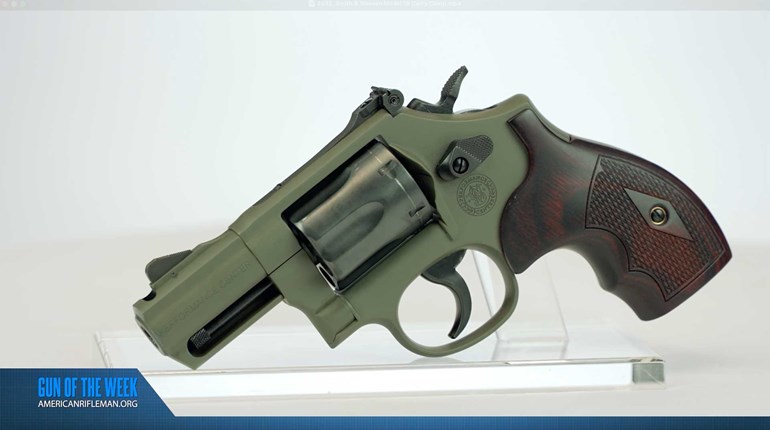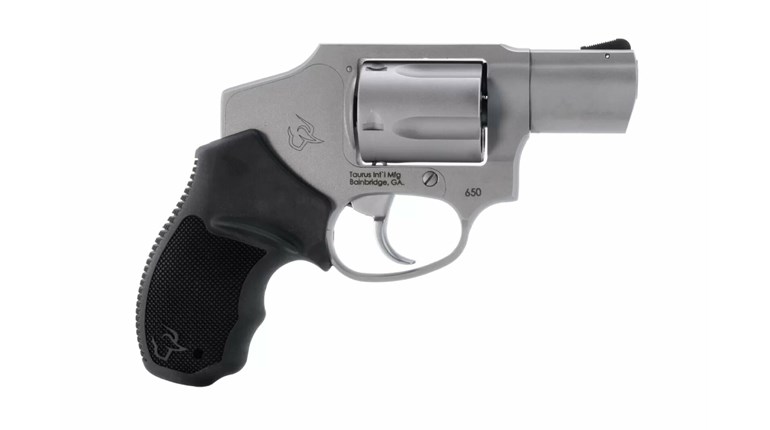
With regards to terminal performance, there’s a lot of discussion and argument about which defensive pistol cartridge is the best. Time and data have seemed to reveal that with regards to the most popular—9 mm, .40 S&W, .45 Auto—there’s really not a great deal of difference. Time and data have also unquestionably revealed that when compared to these auto-pistol cartridges, the .357 Magnum does a better job at stopping bad guys. Depending on which study you give credence to, its considered to be somewhere between 5 percent and 15 percent more effective.
This should really come as no surprise to anyone with a base line understanding of terminal ballistics; the .357 Magnum has more velocity and delivers more energy on target. Combined with the right bullet, this leads to more tissue damage and tissue damage causes pain and hemorrhaging. Both are integral components of voluntary and/or involuntary collapse. If I had only one shot from a handgun to save my life and my choices were a 9 mm, .40 S&W, .45 ACP, or .357 Magnum, I’d choose the .357 Magnum.
The downside the .357 Magnum is three-fold. The .357 Magnum handguns are larger and heavier, they recoil more and they have less capacity. This makes them less comfortable to carry, harder to shoot, and less effective in an extended fight. On the plus side, concealable .357 Magnum handguns are revolvers. This means they’re generally more reliable, will not be pushed out of battery during a contact shot, and are compatible with a wide range of ammunition power levels for practice or carry.

Arguably, what might be the most important aspect of a concealed carry handgun is how comfortable and easy it is to carry. Effectiveness matters, but if your handgun is not comfortable to carry, you won’t carry it, and this makes it totally ineffective. Weight has a lot to do with carry comfort and .357 revolvers can be had as light as 17 ounces, like the Ruger LCR, and as heavy as the 40-ounce Smith & Wesson Model 686, like I was first issued as a police officer. The 17-ounce LCR is easy to carry all day. The heavier 686 will wear on you like a cheap pair of shoes.
The other consideration with weight is recoil. Full-power .357 Magnum loads recoil violently when compared to common auto-pistol cartridges. Out of a 17-ounce handgun, the hottest 9 mm loads will recoil with about 8 foot-pounds of energy. Hot .357 Magnum loads can recoil as much as 75 percent more. For this reason, many who carry ultra-light .357 Magnums load them with lighter recoiling .38 Spl. or .38 Spl. +P ammunition. From a terminal effectiveness standpoint, they’re no better and hardly as good as common 9mm defensive loads. This seriously diminishes the appeal of a five-shot revolver when compared to a higher capacity, better performing, 9mm pistol of a similar weight.
From the standpoint of balance—of carry comfort, effectiveness, and shootability—a loaded .357 Magnum revolver is at its best when it weighs in between 25 and 30 ounces. This is similar in weight to a fully loaded Glock 19. Several .357 Magnums, such as the Ruger SP101 and S&W Model 60 revolvers, meet this specification. They offer a comfortable carry weight and are reasonably concealable. I have a 3-inch SP101, that when paired with a Galco Combat Master Holster, rides almost unnoticeably and seemingly disappears on my side. It is also comfortable to shoot with the hotter .357 Magnum defensive loads; there’s no reason to step down to .38 Spl. standard or +P loads.
As an example of relative shootability of small to mid-size revolvers I conducted a test. I compared a 17-ounce Ruger LCR in .357 Magnum to my 27-ounce Ruger SP101. I also threw a 17-ounce Ruger LCR chambered for the .327 Federal Magnum into the mix. I ran each revolver through the Forty-Five Drill five times with several loads. The goal of this drill is to put five-shots inside a five-inch circle, at five yards, in less than five seconds. As you can see, the results clearly show the advantage of a mid-weight .357 revolver over a lightweight option.
Shootability of Light v Heavy Revolvers
Revolver Load Average Time Total Hits Split Time
.327 LCR 100-gr Speer Gold Dot 3.75* 25* 0.35
.357 LCR 158-gr Federal VHP 3.69 20 0.42
.357 LCR 110-gr Winchester JHP 3.88 17 0.47
.357 SP101 158-gr Federal VHP 3.20 23 0.30
.357 SP101 110-gr Winchester JHP 3.63 22 0.40
NOTES: Average time represents the average of five runs with the listed load on the Forty-Five Drill. Total Hits represents the number of hits out of 25/30* shots fired that landed inside the five-inch circle. Split Time is the average time between shots 1, 2, 3, 4, and 5/6* *Indicates 6/30 shots fired as opposed to 5/25.

Not only was the 27-ounce .357 Magnum faster to fire, but the added controllability due to the weight and longer barrel, allowed for more/better hits. With the full-power .357 Magnum loads, the heavier .357 Magnum was more than 25 percent more accurate and about 6 percent faster. Also of note is the performance of the LCR in .327 Fed. Mag. This is a six- as opposed to a five-shot revolver. Given the excellent terminal effectiveness of the .327 Fed. Mag. load, its added capacity and ease of shooting makes it a better option than a similar weight revolver in .38 Spl. or .357 Magnum.
What none of these words have expressed and others may not even be able to, is the uncomfortableness of shooting full-power .357 Magnum loads in a 17-ounce revolver. Do it once and you’ll understand why these itty-bitty revolvers are most often loaded with .38 Spl. ammunition. Do it five times in a row and you’ll have no desire to do it again. Anyone who tells you a 17-ounce revolver is comfortable to shoot with hot .357 Magnum ammunition is either a liar or they’re not telling the truth.





































